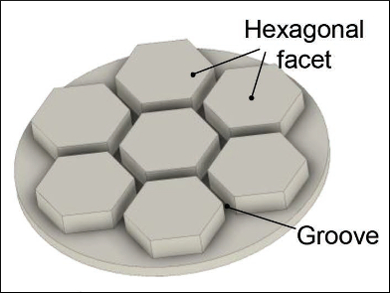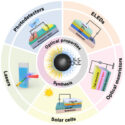Hydrogels are useful materials for applications in wet environments due to their already high water content. They can, for example, be used in biomedical devices, but also in underwater soft robotics—a field inspired by marine organisms which could allow the exploration, inspection, and maintenance of machinery underwater.
Jian Ping Gong, Hokkaido University, Sapporo, Japan, and colleagues have developed hydrogel materials that can reversibly stick to underwater surfaces. The design was inspired by the clingfish, which uses an adhesive disc on its stomach to cling to the ground. These adhesive discs have raised hexagonal structures and grooves that allow water to drain. The researchers recreated this structure (pictured) using a polyampholyte hydrogel. The hydrogel was synthesized using a random copolymerization of an anionic sodium p-styrenesulfonate monomer and a cationic methyl chloride quarternized N,N-dimethylamino ethylacrylate (DMAEA-Q) monomer.
The ionic structure of the hydrogel causes it to form dynamic, reversible bonds with wet surfaces and, thus, allows a fast and reversible adhesion. The hydrogel is mechanically tough and sticks strongly to substrates such as glass, soft hydrogels, or biological tissue. It could, for example, be used for wall-climbing soft robots.
- Tough Hydrogels with Fast, Strong, and Reversible Underwater Adhesion Based on a Multiscale Design,
Ping Rao, Tao Lin Sun, Liang Chen, Riku Takahashi, Gento Shinohara, Hui Guo, Daniel R. King, Takayuki Kurokawa, Jian Ping Gong,
Adv. Mater. 2018.
https://doi.org/10.1002/adma.201801884




